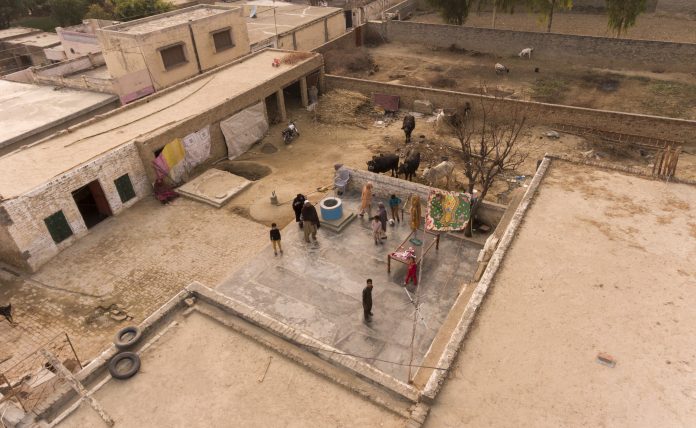
Housing is a fundamental need whose provision can ensure a minimum standard of welfare for a family unit. Indeed, it has been recognized as such through the “Universal Declaration of Human Rights” and its reaffirmation at the 1996 UN Habitat Conference through the “Adequate Shelter for All” slogan. In the context of such cannons and conventions, the indicators on Pakistani housing paint a dire picture. There is a yawning demand-supply gap of over 10 million houses that grows at the rate of 400,000 annually. Commercial development covers a fraction of the annual demand that merely peppers over the chasm and points to an alarming market failure. The inadequate supply in the sector has created a burden on existing housing stock resulting in quality deterioration, haphazard expansion and perpetuation of slums.
The government tried to formulate a national level, cohesive policy to address the myriad challenges associated with the sector through the “National Housing Policy 2001” document, later revised in 2013 to reflect government’s shift in preference towards provision through the free market and empowerment of sector stakeholders. In 2007, the Central Bank supervised the report authored by Housing Advisory Group (HAG) that articulated a set of ten challenges and proposed recommendations and an action plan against each. The major issues to this day still range from weak enforcement of foreclosure laws, lack of standardization in land titling, onerous stamp duties, availability of low cost housing, and access to finance.
HAG’s only action point that has seen some progress is the establishment of the Pakistan Mortgage Refinance Company (PMRC) to increase access to finance to the housing sector. PMRC will provide long term loans at a fixed rate to banks who will in turn pass this on to customers at the retail level. A combination of a fixed rate mark-up over a long tenure (e.g. more than 10 years) would not only result in improved affordability through a lower monthly instalment and higher eligible loan amount for the end customer but also a lower risk stemming from a floating interest rate. In the region, India, Egypt, Malaysia and Jordan have well established secondary mortgage markets and have a thriving mortgage industry.
The introduction of PMRC to the housing finance landscape would certainly provide an uplift to the financial industry. The sector’s loan book comprises of a paltry 65,830 loans for a total outstanding amount of PKR 65 billion down from PKR 89 billion 10 years ago. For some context, just the incremental demand from low-income housing is in excess of a trillion rupees. Further, the Government sponsored House Building Finance Company (HBFC) that provides smaller loans targeted at the low-income segment is marred by operational and financial inefficiencies, chiefly, a high delinquency ratio.
While PMRC will add institutional robustness to the sector, pain point issues of the sector such as foreclosure and land titling need resolution almost simultaneously if not sequentially for the bigger objective (of provision of affordable housing) to be addressed. In the absence of concrete measures, banks will continue to lend to a segment of the population that is a) salaried and upper-middle income and b) intends to purchase property in high income neighborhood’s in urban areas.
Aside from banks, builders are also reluctant to go down market and tap into low-income segments, except for ad-hoc initiatives, most of which are politically or philanthropically motivated. This area is a vacuum that is marked by lack of demand-side segmentation (what are the income segments for low and middle-income housing and what is their financial capacity) and appropriate product offering is a noteworthy market failure.
It is essential that provision of low-income housing functions through the free market where the private sector entities take a lead through commercial incentives with the government interjecting to fill the vacuum through regulation and subsidies. It is for this reason that housing sector policies should not only take into account the financial needs of the final consumer but also the intricacies around builder finance. For instance, banks offer plain vanilla financing to builders even though products related to phased-in project related finance might be a better fit. The latter would circumvent risk from escalation of project cost due to construction delays.
There has been no shortage of experimentation with interventions in housing e.g. KhudakiBasti is a successful example of low-income housing provision. At the end of this spectrum, there is also a thriving micro-finance industry that is well poised to provide loans for staggered construction or home renovation. The roles of stakeholders in government policies are clearly highlighted just that their incentives need to converge and be aligned in the right manner. Regulatory initiatives such as standardization in land titling may involve participation by the municipalities – the lowest tier of government, however, how such rules are standardized and effectively enforced is critical in determining the strength of private sector’s engagement in the housing sector. For now, the “Pakistani Dream” of owning a house remains elusive to its millions of inhabitants.






















Nice and helpful post!
Comments are closed.